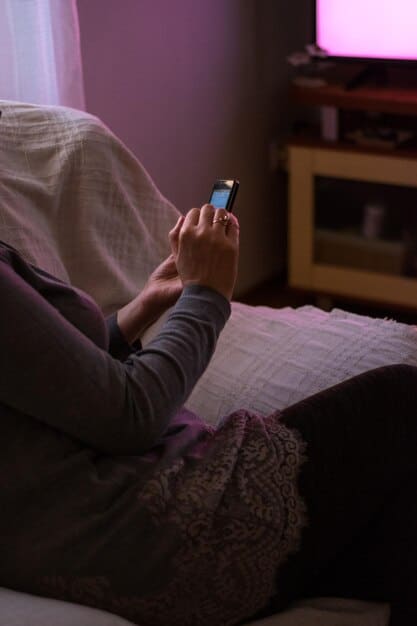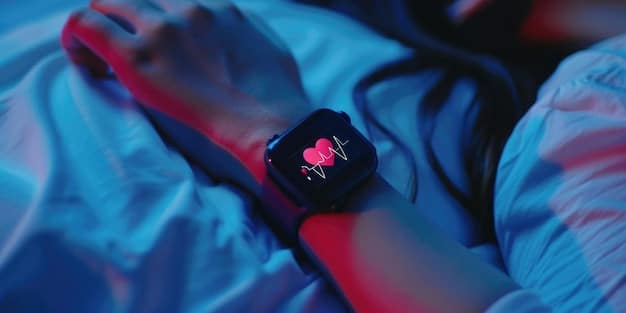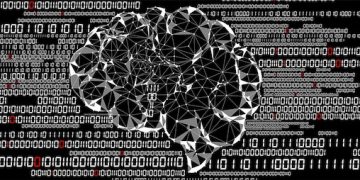Telehealth and Sleep Medicine: Remote Diagnosis and Treatment

Telehealth and sleep medicine are transforming the diagnosis and treatment of sleep disorders through remote consultations, wearable technology, and mobile apps, increasing access to care and improving patient outcomes.
The convergence of telehealth and sleep medicine is revolutionizing how sleep disorders are diagnosed and managed. This innovative approach leverages technology to provide remote care, enhance access to specialists, and improve patient outcomes. Discover how telehealth is reshaping the landscape of sleep medicine.
Understanding Telehealth in Sleep Medicine
Telehealth has emerged as a powerful tool in healthcare, extending its reach to various specialties, including sleep medicine. By using digital technologies, telehealth overcomes geographical barriers, making specialized care more accessible to patients in remote or underserved areas.
What is Telehealth?
Telehealth involves the use of electronic information and telecommunication technologies to support long-distance clinical healthcare, patient and professional health-related education, public health, and health administration.
Benefits of Telehealth in Sleep Medicine
Telehealth offers numerous advantages, such as increased access to care, reduced travel time and costs, and improved patient engagement. For sleep medicine, these benefits can translate into earlier diagnosis and more effective management of sleep disorders.
- Enhances accessibility for patients in rural or remote locations.
- Reduces the need for in-person visits, saving time and money.
- Facilitates continuous monitoring of sleep patterns using wearable devices.
- Improves patient adherence to treatment plans through regular virtual check-ins.
The integration of telehealth in sleep medicine is not just a trend but a necessary evolution to meet the growing demand for sleep disorder diagnosis and treatment. As technology advances, telehealth solutions become more sophisticated and user-friendly, further enhancing their effectiveness.
Common Sleep Disorders Addressed via Telehealth
Telehealth can effectively address a variety of sleep disorders, from insomnia to sleep apnea. Remote consultations and monitoring allow healthcare providers to diagnose and manage these conditions with greater ease and precision.

Insomnia
Telehealth provides a convenient platform for cognitive behavioral therapy for insomnia (CBT-I), a gold-standard treatment for this sleep disorder. Virtual sessions enable therapists to guide patients through relaxation techniques and sleep hygiene practices.
Sleep Apnea
Remote monitoring devices and virtual consultations can aid in the diagnosis and management of sleep apnea. Patients can undergo home sleep apnea tests (HSAT) and discuss the results with their healthcare provider via telehealth.
- Remote PAP therapy management.
- Virtual coaching on device usage and mask fitting.
- Regular follow-ups to monitor adherence and address concerns.
Telehealth expands access to treatments like CBT-I, which might otherwise be unavailable due to geographical constraints or lack of local specialists. This is particularly beneficial for underserved communities and individuals with mobility issues.
Remote Diagnosis of Sleep Disorders
The remote diagnosis of sleep disorders involves a combination of virtual consultations, wearable technology, and home-based testing. These tools provide valuable data that helps healthcare providers make accurate diagnoses without requiring patients to visit a sleep laboratory.
Virtual Consultations
Telehealth platforms enable healthcare providers to conduct comprehensive sleep assessments, review medical history, and discuss sleep-related concerns with patients through video conferencing.
Wearable Sleep Tracking Devices
Devices like smartwatches and fitness trackers can monitor sleep patterns, providing data on sleep duration, sleep stages, and heart rate. This information can be shared with healthcare providers to aid in diagnosis.
Remote diagnosis streamlines the process, reducing wait times and improving patient convenience. The continuous monitoring capabilities of wearable devices also offer a more complete picture of a patient’s sleep habits.

Treatment Options via Telehealth
Telehealth offers a range of treatment options for sleep disorders, including behavioral therapies, medication management, and remote monitoring. These interventions can be delivered effectively through virtual platforms, enhancing patient convenience and adherence.
Cognitive Behavioral Therapy for Insomnia (CBT-I)
Virtual CBT-I sessions provide patients with the tools and strategies to improve their sleep habits and manage insomnia symptoms. Therapists guide patients through techniques like stimulus control, sleep restriction, and cognitive restructuring.
Medication Management
Telehealth facilitates the remote monitoring of patients on sleep medications. Healthcare providers can track medication adherence, assess potential side effects, and make necessary adjustments to the treatment plan.
- Reviewing medication efficacy and side effects via virtual check-ins.
- Providing guidance on proper medication usage.
- Adjusting dosages based on patient feedback and monitoring data.
Telehealth empowers patients to take an active role in their sleep disorder treatment. The convenience of virtual sessions and remote monitoring encourages better adherence to treatment plans, leading to improved outcomes.
Challenges and Solutions in Telehealth for Sleep Disorders
While telehealth offers numerous advantages, it also presents certain challenges, such as technological barriers, privacy concerns, and regulatory issues. Addressing these challenges is crucial to ensure the successful and widespread adoption of telehealth in sleep medicine.
Technological Barriers
Not all patients have access to reliable internet or the necessary devices for telehealth consultations. To overcome this, healthcare providers can offer alternative communication methods, such as phone calls, and provide technical support to patients.
Privacy and Security
Protecting patient data is paramount in telehealth. Healthcare providers must ensure that telehealth platforms are HIPAA-compliant and implement robust security measures to safeguard sensitive information.
Addressing these challenges requires a collaborative effort from healthcare providers, technology developers, and policymakers. By working together, we can create a telehealth ecosystem that is accessible, secure, and effective for all patients.
The Future of Telehealth and Sleep Medicine
The future of telehealth in sleep medicine is promising, with ongoing advancements in technology and increasing acceptance among healthcare providers and patients. Telehealth is expected to play an even greater role in the diagnosis, treatment, and management of sleep disorders in the years to come.
Artificial Intelligence (AI) and Machine Learning
AI and machine learning algorithms can analyze sleep data collected from wearable devices to provide personalized insights and recommendations. These technologies can also assist healthcare providers in making more accurate diagnoses and treatment decisions.
- Personalized sleep coaching apps.
- AI-powered sleep apnea screening tools.
- Predictive models for sleep disorder management.
Integration with Electronic Health Records (EHRs)
Seamless integration of telehealth platforms with EHRs will streamline data sharing and improve care coordination. This integration will enable healthcare providers to have a comprehensive view of a patient’s health history, leading to more informed decisions.
The future of telehealth in sleep medicine is one of innovation, integration, and improved patient outcomes. As technology continues to evolve, telehealth will become an indispensable tool for delivering high-quality sleep care to patients around the world.
| Key Point | Brief Description |
|---|---|
| 🩺 Remote Diagnosis | Virtual visits & wearable tech for sleep disorder diagnosis. |
| 💻 CBT-I via Telehealth | Virtual cognitive behavioral therapy sessions for insomnia. |
| 📱 Wearable Sleep Trackers | Smartwatches & fitness trackers monitor sleep patterns. |
| 🔒 Privacy Concerns | Ensuring HIPAA compliance in telehealth platforms. |
Frequently Asked Questions (FAQ)
Telehealth can diagnose various sleep disorders, including insomnia, sleep apnea, and restless legs syndrome. Remote monitoring and virtual consultations provide valuable data for accurate diagnosis.
Studies show that telehealth can be as effective as in-person care for certain sleep disorders, particularly when it comes to delivering behavioral therapies like CBT-I and managing PAP therapy.
Typically, you’ll need a computer or smartphone with a camera and microphone, and a reliable internet connection. Your healthcare provider may also recommend wearable sleep tracking devices.
Reputable telehealth platforms employ robust security measures, including encryption and HIPAA compliance, to protect your personal and medical information. Ensure the provider uses a secure platform.
Yes, telehealth can assist in managing sleep apnea through remote PAP therapy adjustments, virtual coaching on device usage, and regular follow-up appointments to monitor adherence and address any concerns.
Conclusion
In conclusion, telehealth and sleep medicine represent a significant advancement in healthcare, offering accessible, convenient, and effective solutions for diagnosing and treating sleep disorders. As technology evolves, telehealth will continue to transform the landscape of sleep medicine, improving the lives of patients worldwide.





